The Vault is Slate’s history blog. Like us on Facebook, follow us on Twitter @slatevault, and find us on Tumblr. Find out more about what this space is all about here.
This group of lantern slides by photographer Walter McClintock depicts Blackfeet tipis in Montana between 1896 and 1914. Many of the McClintock lantern slides have been digitized and are available through Yale’s Beinecke Rare Book & Manuscript Library.
McClintock was an Easterner and a graduate of Yale who initially went West for his health and then returned to serve as official photographer for a government expedition surveying forests in Montana. William Jackson (or Siksikakoan), one of the expedition’s guides, befriended McClintock and when the survey was finished, introduced him to a Blackfeet group. McClintock was to visit Blackfeet communities off and on for eighteen years.
As historian Sherry L. Smith writes, McClintock made his time with the Blackfeet a centerpiece of his life, publishing and giving lectures on the topic for years, and even producing an opera based on Blackfeet songs. “McClintock did not go west in search of anything, other than improved health and the possibility for some adventure,” writes Smith. “He simply stumbled upon Indians and then, having done so, grasped onto them for a lifetime.”
McClintock, like many other white writers and artists at the time, romanticized tribal life, contrasting it to what he called “the turmoil of the city, the dreary grind and slavery of business … [and] the shackles of social convention.” While the Blackfeet tribal members who befriended him viewed McClintock as a possible ally who might intervene with the government on their behalf, as other white writers like George Bird Grinnell had done, Smith points out that McClintock remained a passive observer. He “preferred the romance, not the reality” of reservation life.
Among his more than a thousand photographs of Blackfeet in Montana, McClintock returned again and again to the motif of tipis silhouetted against the gorgeous sky. The tipi images, retouched and colorized, represent an outsider’s idealistic vision of a community in harmony with nature.
I first found the McClintock lantern slides through the Twitter feed of photographer Jack Picone.
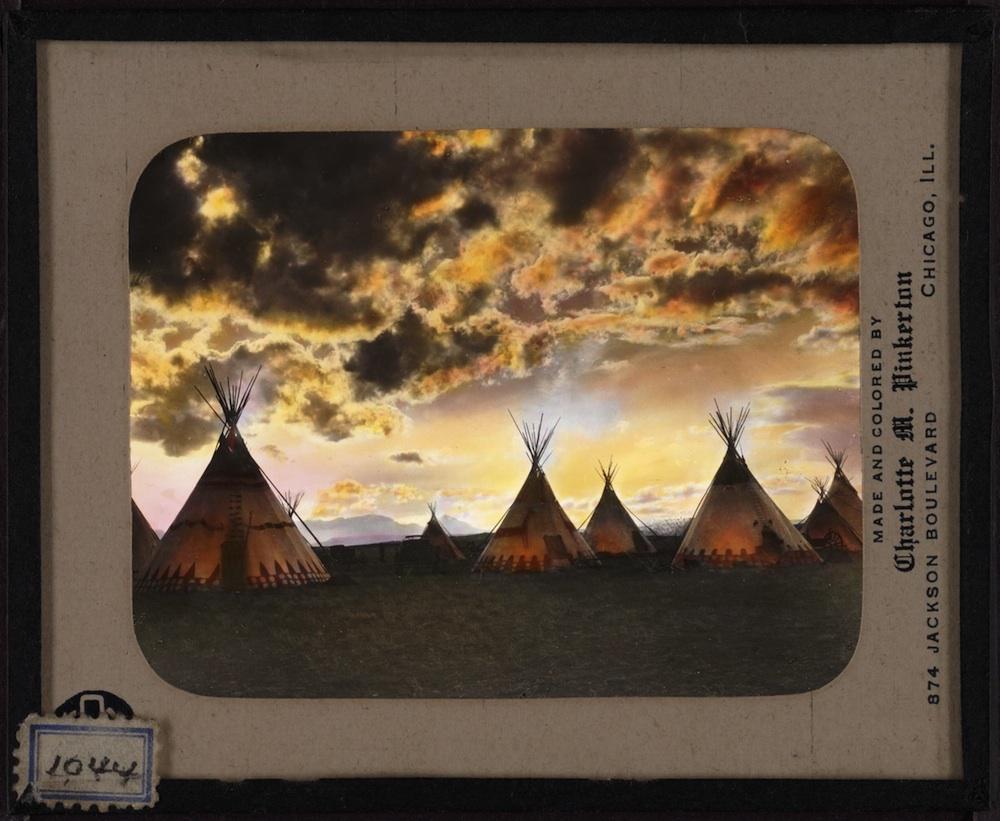
Yale Collection of Western Americana, Beinecke Rare Book and Manuscript Library, Yale University.
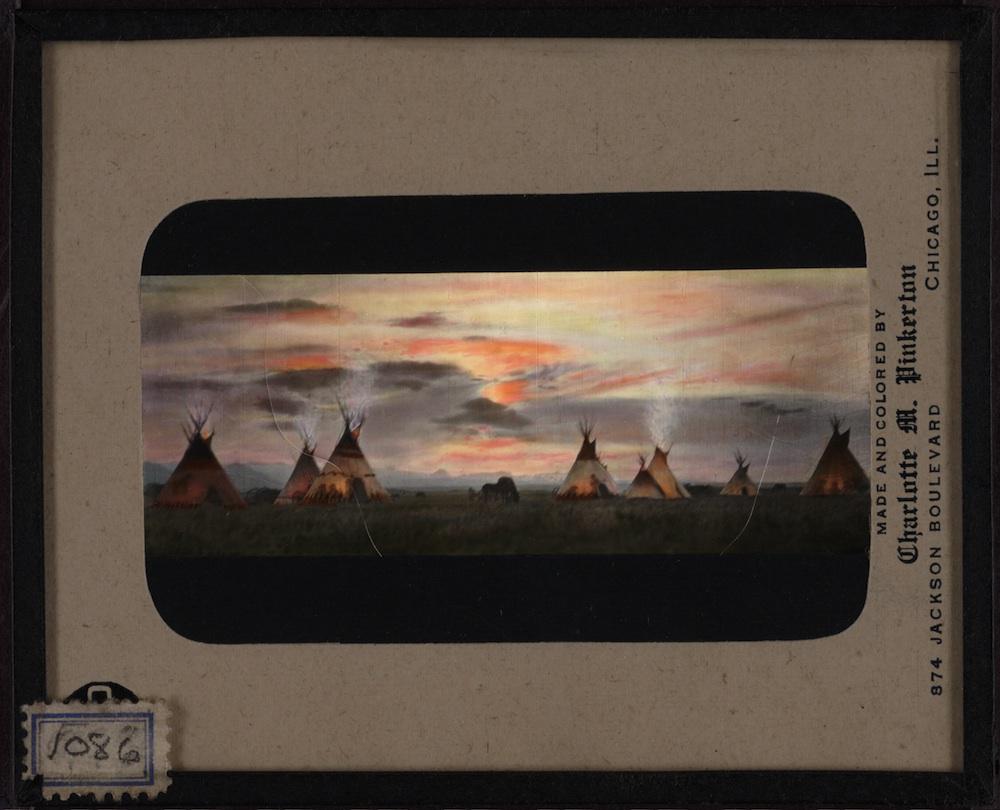
Yale Collection of Western Americana, Beinecke Rare Book and Manuscript Library, Yale University.
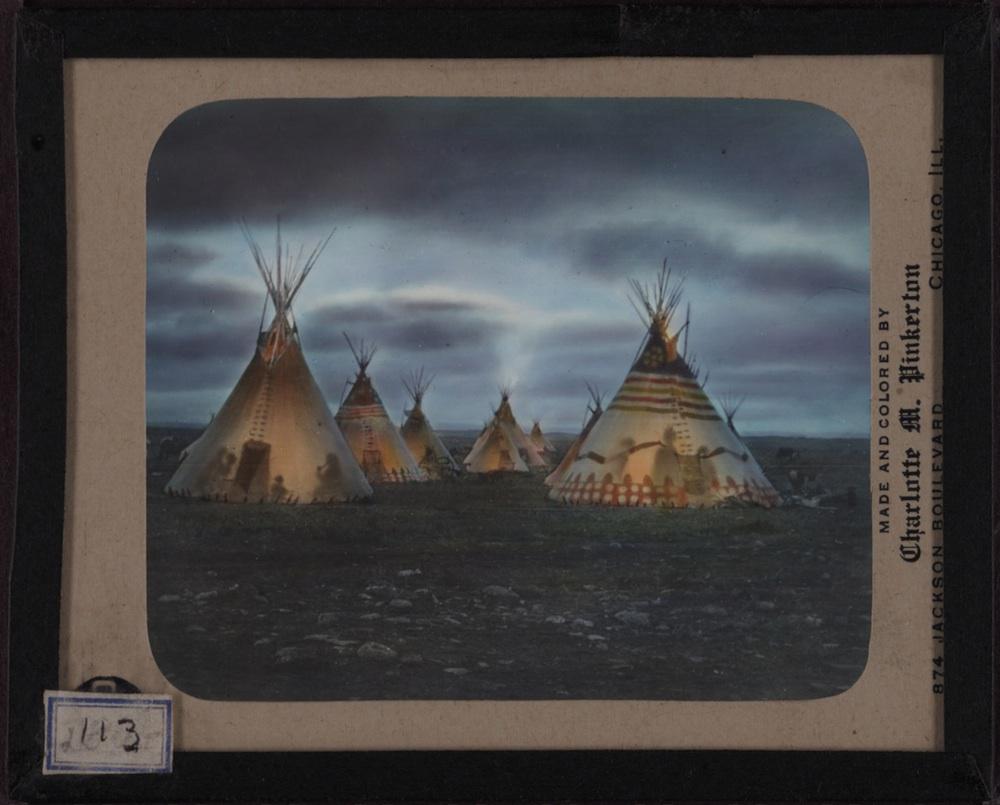
Yale Collection of Western Americana, Beinecke Rare Book and Manuscript Library, Yale University.
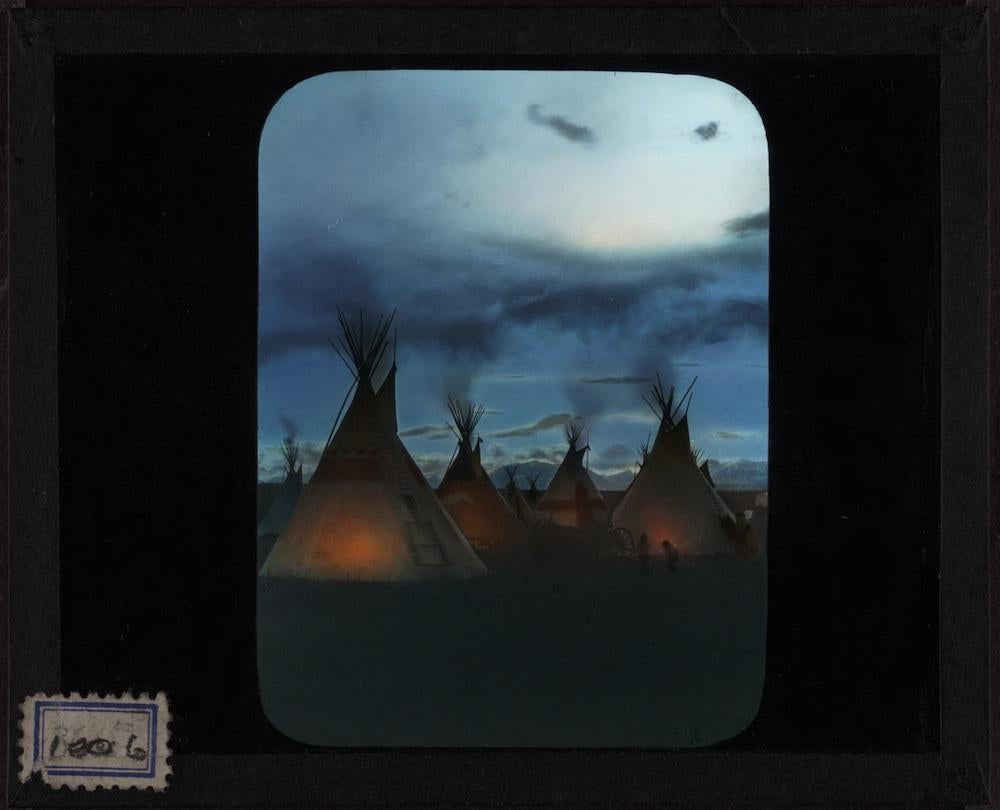
Yale Collection of Western Americana, Beinecke Rare Book and Manuscript Library, Yale University.

Yale Collection of Western Americana, Beinecke Rare Book and Manuscript Library, Yale University.
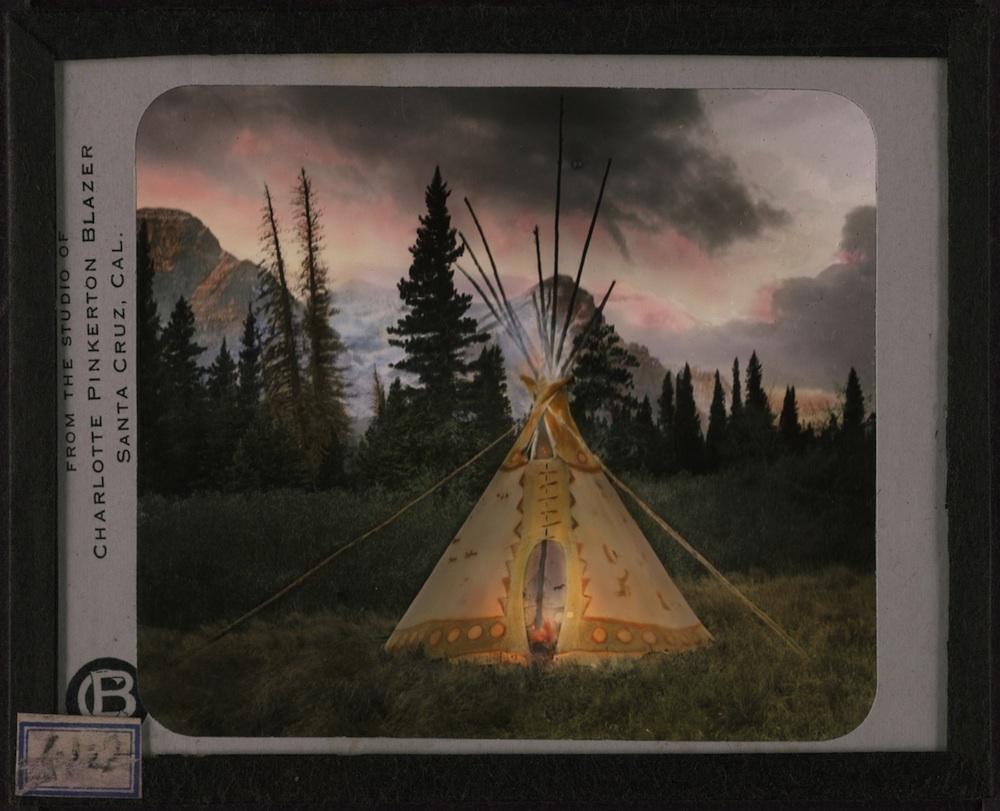
Yale Collection of Western Americana, Beinecke Rare Book and Manuscript Library, Yale University.

Yale Collection of Western Americana, Beinecke Rare Book and Manuscript Library, Yale University.